“Men in Black II” (stylized as MIIB) is a 2002 American film that melds elements of science fiction, action, and comedy. This sequel is based on the Marvel Comics series “The Men in Black” by Lowell Cunningham, which in turn draws from the rich vein of UFO conspiracy theories. The film was released by Sony Pictures Releasing and marks the second installment in the “Men in Black” film series, following the original 1997 film directed by Barry Sonnenfeld.
Continuing in the directorial footsteps of its predecessor, “Men in Black II” is again helmed by Sonnenfeld, with Tommy Lee Jones and Will Smith reprising their roles as Agents K and J, respectively. Their dynamic partnership, characterized by witty banter and thrilling action sequences, remains the core of the film. The sequel introduces new characters, played by notable actors such as Lara Flynn Boyle, Johnny Knoxville, Rosario Dawson, Tony Shalhoub, and Rip Torn, enriching the film’s narrative and expanding its universe.
Set five years after the events of the first film, “Men in Black II” explores the further adventures of the secretive agency tasked with managing extraterrestrial interactions on Earth. The plot pivots around the return of Agent K from retirement when a new threat emerges that only he can stop, weaving a tale that combines elements of mystery, suspense, and comedy.
As a sequel, “Men in Black II” had the challenging task of living up to the high expectations set by its successful predecessor. While it continues the franchise’s trademark blend of humor, special effects, and action, it also aims to deliver a fresh narrative to keep the audience engaged. The film’s ability to blend the familiar with the new has led to varied receptions from audiences and critics alike, making it a fascinating subject for discussion regarding its place and impact within the larger “Men in Black” series.
| Attribute | Details |
|---|---|
| Title | Men in Black II (MIIB) |
| Year | 2002 |
| Genre | Science Fiction, Action, Comedy |
| Based on | “The Men in Black” by Lowell Cunningham |
| Director | Barry Sonnenfeld |
| Main Cast | Tommy Lee Jones, Will Smith, Lara Flynn Boyle, Johnny Knoxville, Rosario Dawson, Tony Shalhoub, Rip Torn |
| Plot Setting | Set five years after the first film, revolves around the secretive agency managing extraterrestrial interactions on Earth |
| Release | Sony Pictures Releasing |
| Sequel To | 1997 “Men in Black” film |
| Themes | Mystery, suspense, comedy, UFO conspiracy theories |
Contents
Background and Development
The “Men in Black” franchise, initiated by the 1997 film, roots itself in a comic book series published by Marvel/Aircel Comics. The original film, directed by Barry Sonnenfeld, introduced audiences to a secret agency tasked with monitoring extraterrestrial activities on Earth. Its blend of witty dialogue, engaging storytelling, and groundbreaking special effects not only won critical acclaim but also achieved massive box office success, grossing over $589 million worldwide. This success set the stage for a sequel, sparking excitement and high expectations among fans and critics alike.
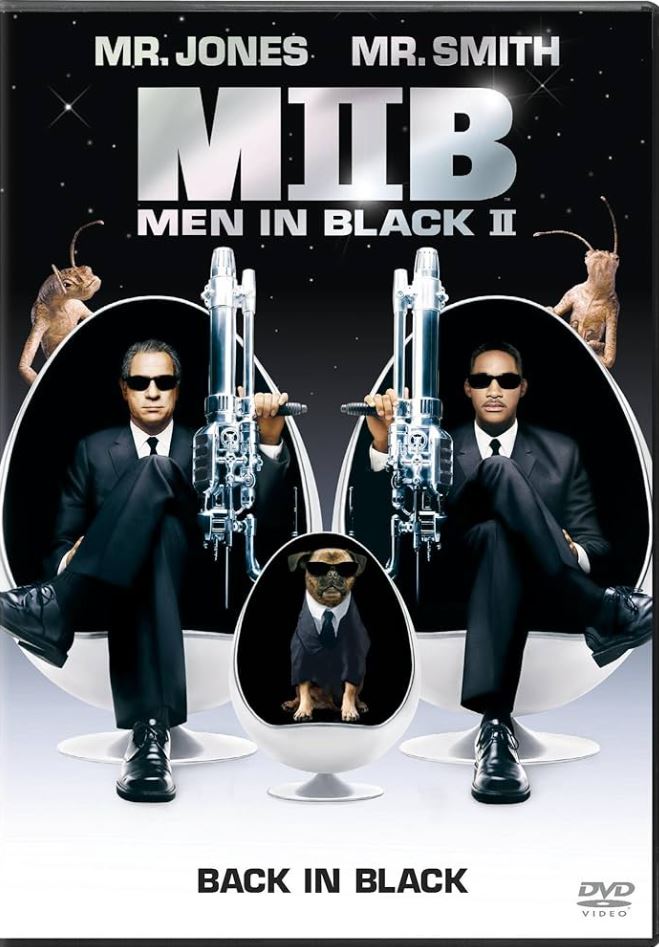
Development for “Men in Black II” began shortly after the first film’s release. The sequel aimed to expand the universe while maintaining the charm and dynamic that made the original beloved. Key figures such as Tommy Lee Jones and Will Smith were quickly confirmed to reprise their roles, ensuring continuity in the series’ core character dynamics. Barry Sonnenfeld also returned to direct, bringing his unique style and vision back to the franchise.
Initially, David Koepp, known for his work on “Jurassic Park” and “Spider-Man,” was brought on to craft the screenplay. However, his involvement was short-lived as he departed to focus on other projects. Robert Gordon took over, infusing the script with new ideas and directions. Later, Barry Fanaro was enlisted to perform final rewrites, which included adding more humor and pop culture references, a hallmark of the first film’s appeal. This change in the screenplay team led to a script that aimed to retain the original’s spirit while introducing fresh elements and characters.
| Aspect | Details |
|---|---|
| Origin | Based on a comic book series by Marvel/Aircel Comics |
| Initial Release | 1997 film directed by Barry Sonnenfeld |
| Main Characters | Secret agency monitoring extraterrestrial activities |
| Success | Grossed over $589 million worldwide |
| Sequel Initiation | Development began shortly after the first film’s release |
| Key Returns for Sequel | Tommy Lee Jones, Will Smith, and director Barry Sonnenfeld |
| Screenplay Development | Started with David Koepp, followed by Robert Gordon, and finalized with Barry Fanaro’s rewrites |
| Screenplay Focus | Maintaining original charm, introducing new elements and characters, adding humor and pop culture references |
Production Details
Principal photography for “Men in Black II” began on June 11, 2001, and concluded on September 23, 2001. New York City once again served as the primary backdrop, providing an iconic and familiar urban setting that complemented the film’s narrative. The choice of location helped maintain the continuity of the series’ aesthetics and allowed for the integration of landmark visuals which are pivotal in several key scenes of the film.
The production, however, faced unexpected challenges following the tragic events of September 11, 2001. The attacks had a profound impact on the film’s production schedule and content. Several scenes originally set against the backdrop of the World Trade Center had to be revised or shot anew. The sensitivity of the situation required careful consideration in adjusting the film’s content without losing the essence of the story or its setting.
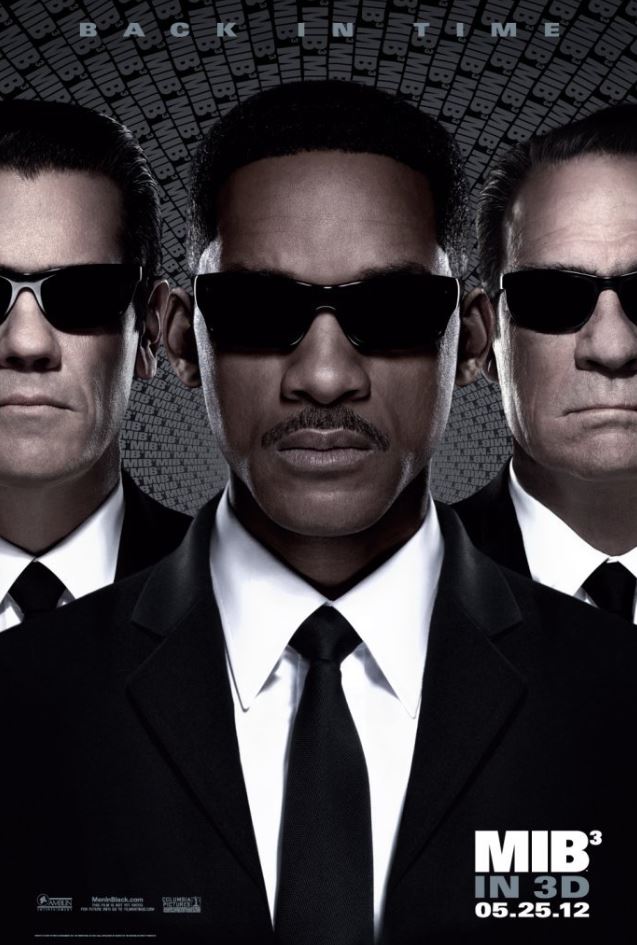
Director Barry Sonnenfeld’s leadership was crucial during these adjustments. His ability to manage large-scale productions while adapting to sudden changes was instrumental in keeping the project on track. Sonnenfeld’s experience in blending action and comedy helped ensure that the sequel remained true to the tone of the franchise despite the real-world challenges.
Composer Danny Elfman, who scored the first “Men in Black,” returned to compose the soundtrack for the sequel. Elfman’s music played a significant role in shaping the film’s atmosphere, blending traditional orchestration with electronic music to capture the futuristic and mysterious essence of the Men in Black universe. His compositions provided continuity in the film’s auditory experience, linking the sequel to its predecessor through familiar themes and motifs while introducing new leitmotifs associated with newly introduced characters and situations.
The combined efforts of the screenplay team, the director, and the composer, along with the resilience shown by the entire production crew during a period of national distress, highlighted the collaborative nature of filmmaking. These contributions were crucial in bringing “Men in Black II” to life, ensuring that the film not only respected its origins but also embraced the opportunity to evolve and entertain a global audience.
| Aspect | Details |
|---|---|
| Principal Photography Dates | Began on June 11, 2001, and concluded on September 23, 2001 |
| Primary Location | New York City |
| Impact of 9/11 Attacks | Significant changes to the production schedule and content; scenes involving the World Trade Center were revised or reshot |
| Director’s Role | Barry Sonnenfeld managed large-scale production adaptations and maintained the film’s tone during challenging times |
| Composer | Danny Elfman returned to compose the soundtrack, blending orchestration with electronic music to enhance the film’s atmosphere |
| Production Challenges | Navigating sensitivity post-9/11 while keeping the project on track and faithful to the original’s essence |
Plot Synopsis
“Men in Black II” resumes the story of the secretive agents tasked with monitoring extraterrestrial life on Earth, five years after the events of the original film. Agent J (Will Smith) has become the top operative in the Men in Black organization, yet he faces dissatisfaction due to a series of partners whom he finds emotionally unsuitable for the job, leading to frequent use of the neuralyzer. The plot thickens with the murder of an alien at a pizzeria, drawing J into a new mystery involving Serleena (Lara Flynn Boyle), a shapeshifting Kylothian alien who resembles a Victoria’s Secret model. She is in search of a powerful artifact known as the Light of Zartha.
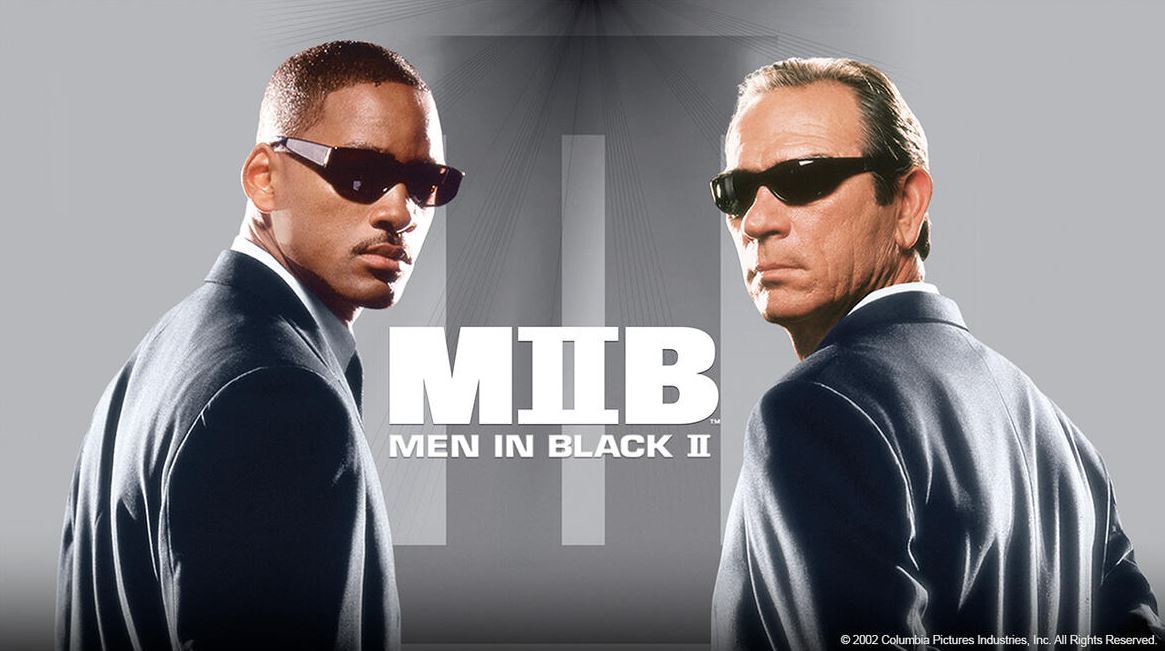
Serleena’s arrival on Earth triggers the reassembly of the old team when it becomes clear that the only person with knowledge about the Light of Zartha is Agent K (Tommy Lee Jones), who has been neuralyzed upon retirement and lives as a postmaster in Massachusetts unaware of his past. Agent J must then embark on a mission to restore K’s memory, revisiting their old haunts and piecing together K’s fragmented memories.
The narrative structure of “Men in Black II” is built around a chase for the Light of Zartha, introducing new characters and expanding the universe with inventive alien creatures and advanced technologies. Themes of partnership and memory play central roles, exploring how past decisions impact the present. The film also delves into the notion of hidden histories and the responsibilities that come with guarding cosmic secrets, echoing the personal dynamics between the characters.
| Aspect | Details |
|---|---|
| Timeline | Set five years after the original film |
| Main Character | Agent J (Will Smith), now the top operative |
| Initial Conflict | Agent J faces dissatisfaction with his partners, frequently uses the neuralyzer |
| New Threat | Serleena (Lara Flynn Boyle), a shapeshifting Kylothian alien, searching for the Light of Zartha |
| Key Plot Twist | Agent K’s memory is central to the mystery; J must restore it after K was neuralyzed and retired |
| Setting | Various locations including old haunts and the Men in Black headquarters |
| Themes | Partnership, memory, hidden histories, cosmic responsibilities |
Cast and Characters
The cast of “Men in Black II” brings back the charismatic duo of Tommy Lee Jones as Agent K and Will Smith as Agent J, whose chemistry remains a staple of the series. Lara Flynn Boyle’s addition as Serleena adds a new level of villainy with her shape-shifting ability, creating a formidable antagonist. Rosario Dawson plays Laura Vasquez, a key figure in the plot’s development, who later reveals deeper connections to the alien narrative.
Johnny Knoxville portrays a dual-headed alien named Scrad and Charlie, adding a peculiar twist of humor and oddity to the story. Tony Shalhoub reprises his role as Jack Jeebs, providing comic relief and crucial assistance to the protagonists. Rip Torn continues as Zed, the head of the MIB, maintaining order and guidance within the agency.
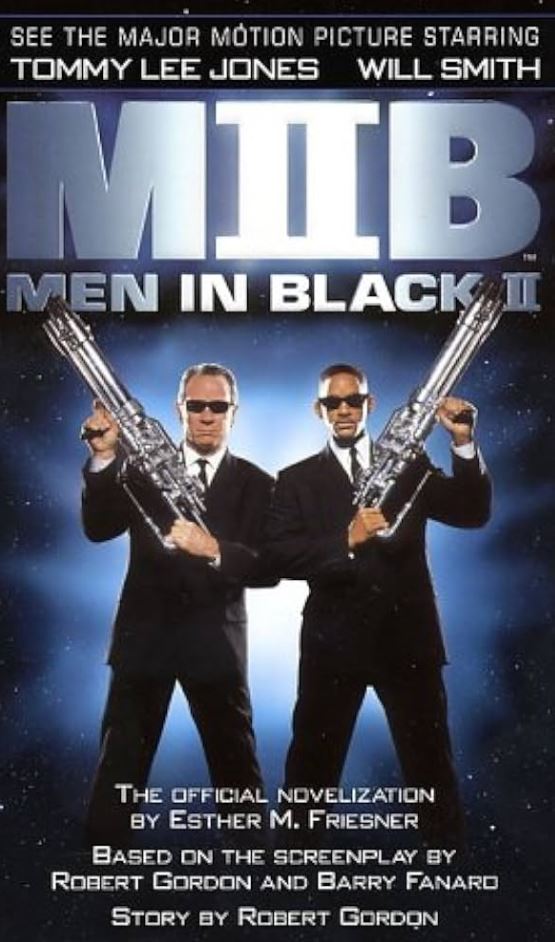
The film also includes notable cameo appearances that enrich its cultural texture. Michael Jackson appears as Agent M, playing on his iconic persona with a humorous twist. This cameo cleverly integrates Jackson’s known interest in transformation and identity, themes that resonate with the film’s narrative about aliens hiding in plain sight.
These characters collectively contribute to a narrative that is both expansive and introspective, exploring themes of identity, duty, and the past’s influence on the present. Each character’s role is carefully woven into the central plot, providing depth to the film’s storyline and enhancing the dynamic world of the Men in Black. The casting choices and character development in “Men in Black II” play crucial roles in driving the film’s plot forward while maintaining the humor and intrigue that fans of the franchise expect.
| Actor | Character | Description |
|---|---|---|
| Tommy Lee Jones | Agent K | Reprises his role; central to the plot with his hidden knowledge and past |
| Will Smith | Agent J | Top operative, works to restore K’s memory and unravel the mystery |
| Lara Flynn Boyle | Serleena | New antagonist with shape-shifting ability, searching for the Light of Zartha |
| Rosario Dawson | Laura Vasquez | Key figure in the plot, reveals connections to the alien narrative |
| Johnny Knoxville | Scrad/Charlie | Dual-headed alien, adds humor and oddity |
| Tony Shalhoub | Jack Jeebs | Provides comic relief and crucial help to the protagonists |
| Rip Torn | Zed | Continues as the head of MIB, offering guidance and maintaining order |
| Michael Jackson | Agent M | Cameo appearance, plays on themes of transformation and identity |
Release and Marketing
“Men in Black II” made its grand entrance into cinemas with a premiere at Mann Village Theater in Westwood, Los Angeles on June 26, 2002. The theatrical release followed a week later on July 3, 2002, strategically timed to capitalize on the Independence Day holiday—a period known for high cinema attendance. This release date mirrored the marketing strategy of leveraging significant national holidays to maximize audience turnout, a tactic often employed in blockbuster film releases.
The marketing campaign for “Men in Black II” was extensive and multifaceted, featuring innovative strategies that included partnerships with major brands. One of the most prominent promotional collaborations was with Burger King, which launched a themed kids’ meal that included toys based on the movie. This partnership not only helped promote the film but also aimed to attract family audiences by tying in the movie experience with popular fast-food meals.
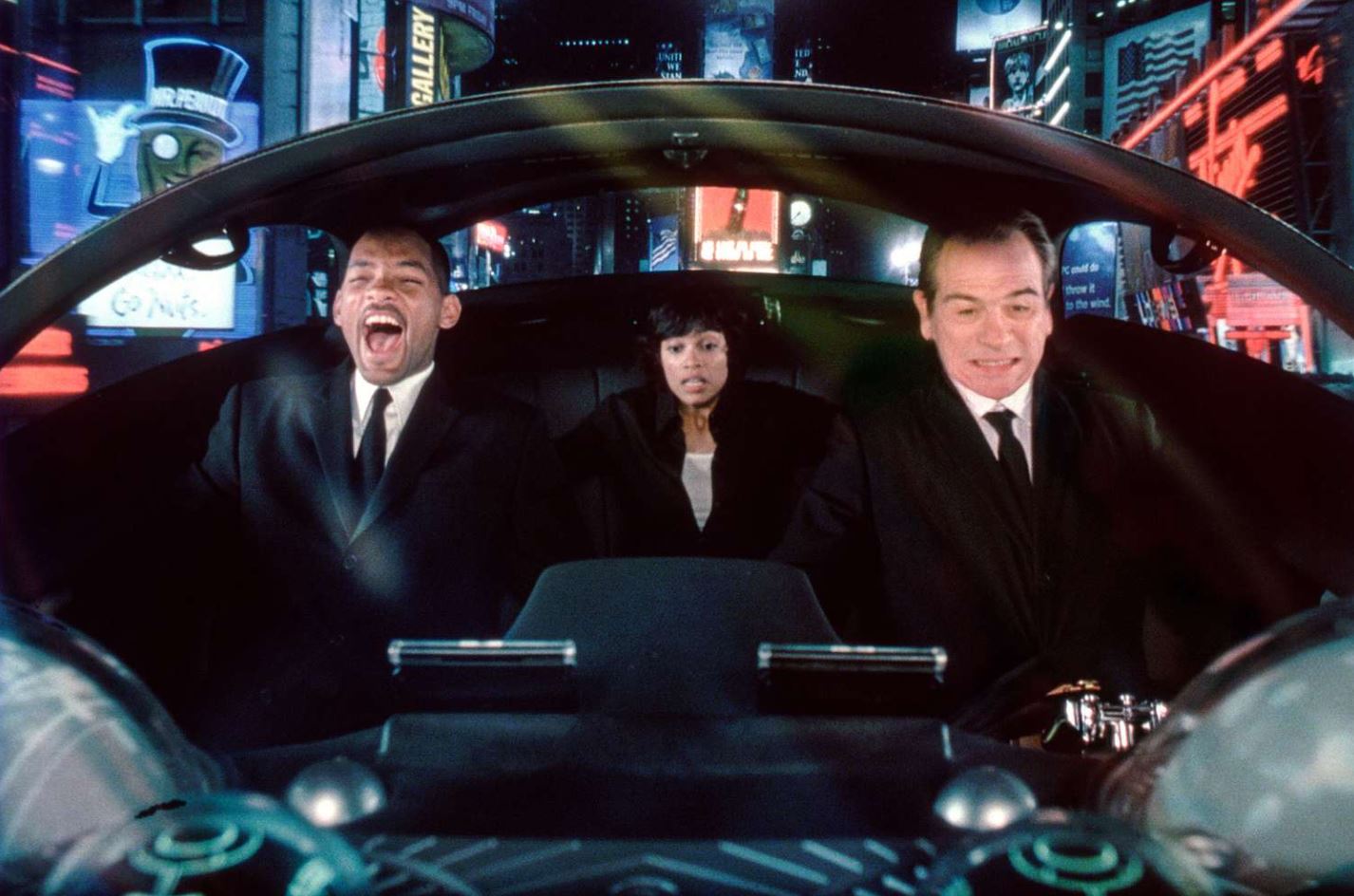
The film’s trailers and teasers were strategically released to build anticipation. The first teaser trailer premiered in December 2001 and was shown alongside major film screenings such as “The Lord of the Rings: The Fellowship of the Ring” and “Ali,” ensuring it reached a diverse audience. A subsequent trailer was released in April 2002 and made its debut in theaters on May 3, 2002, with the release of “Spider-Man,” targeting a similar demographic of moviegoers interested in action and fantasy genres.
Home media release was another key component of the film’s overall marketing strategy. “Men in Black II” was released on DVD and VHS on November 26, 2002, allowing fans to own a copy just in time for the holiday season, a peak period for home media sales. The Blu-ray version followed much later, releasing on May 1, 2012, and included special features that appealed to die-hard fans and collectors, such as alternate endings and behind-the-scenes footage.
| Event | Date | Details |
|---|---|---|
| Premiere Location | June 26, 2002 | Mann Village Theater, Westwood, Los Angeles |
| Theatrical Release | July 3, 2002 | Timed for Independence Day to maximize audience turnout |
| Promotional Partnerships | 2002 | Collaboration with Burger King featuring themed kids’ meals with toys |
| Trailer Releases | December 2001 and April 2002 | First trailer with major films in December; second trailer with “Spider-Man” in May 2002 |
| Home Media Release | DVD/VHS: November 26, 2002; Blu-ray: May 1, 2012 | DVD and VHS release for the holiday season; Blu-ray included special features like alternate endings |
Box Office Performance
“Men in Black II” opened to significant commercial success, earning $18.5 million on its opening day, marking it as the third-highest Wednesday opening at the time, following behind giants like “Star Wars: Episode I – The Phantom Menace” and “Jurassic Park III.” Over its opening weekend, the film grossed an impressive $52.1 million, setting a new record for the highest Fourth of July three-day opening weekend—a record previously held by its predecessor, “Men in Black.” The film’s strategic release date and effective marketing strategies were pivotal in achieving these numbers.
In total, “Men in Black II” amassed $441.8 million worldwide, making it the fifth-highest-grossing film of 2002. This performance, while strong, highlighted a trend seen with many sequels where the follow-up does not always surpass the original in terms of box office earnings. The original “Men in Black” had grossed a slightly higher total of over $589 million globally. However, the sequel still managed to hold its own in a competitive market.
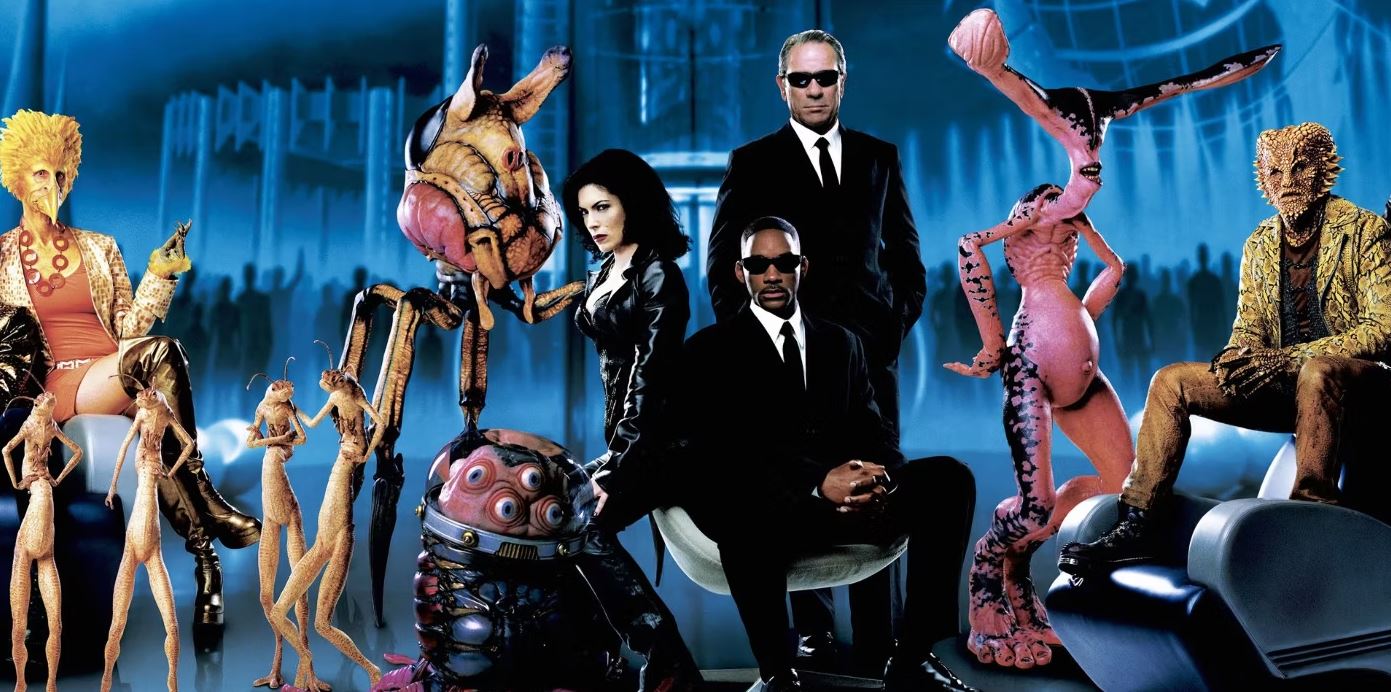
When compared to other films released in the same year, such as “Spider-Man,” which grossed over $821 million worldwide, “Men in Black II” did not top the box office charts but maintained a respectable performance. The film’s success underscored the lasting appeal of the franchise and the effectiveness of its promotional tactics, though it faced stiff competition from other blockbuster releases that year.
The financial outcomes of “Men in Black II” reflect a nuanced picture of how sequels may ride on the coattails of their predecessors’ successes while facing challenges in surpassing them. Despite the mixed critical reception, the film proved to be a financial success, demonstrating the enduring popularity of the franchise and its characters.
| Milestone | Amount | Context |
|---|---|---|
| Opening Day Earnings | $18.5 million | Third-highest Wednesday opening at the time |
| Opening Weekend Gross | $52.1 million | Highest Fourth of July three-day opening weekend record at that time |
| Total Global Earnings | $441.8 million | Fifth-highest-grossing film of 2002 |
| Comparison to Predecessor | Over $589 million | “Men in Black” grossed more than the sequel |
| Comparison to “Spider-Man” | Over $821 million | Did not top box office charts but maintained respectable performance |
Critical Reception Via Video
“Men in Black II” received a mixed reception from critics, as reflected in its scores on major review aggregators. On Rotten Tomatoes, the film holds an approval rating of 39%, based on 198 reviews, with an average rating of 5.30/10. The site’s critical consensus notes that the film “lacks the freshness of the first movie and recycles elements from its predecessor with mixed results.” On Metacritic, it has a score of 49 out of 100, indicating “mixed or average reviews,” based on 37 critic reviews. These scores signify a clear division in critical opinion, reflecting a range of responses from disappointment to moderate praise.
Critics praised the performances of Tommy Lee Jones and Will Smith, noting that their chemistry continued to be a highlight of the sequel. Their dynamic interactions and comedic timing were often highlighted as key strengths of the film. However, criticisms were directed towards the plot and pacing of the movie. Many reviewers felt that the storyline was less compelling and more convoluted than the original, with an over-reliance on special effects and action sequences at the expense of a strong narrative.
The visual effects received a mixed response. While some praised the advancements and the imaginative creature designs by Rick Baker, others felt that the effects were overwhelming and sometimes overshadowed the story. The introduction of new alien characters and the expanded universe were seen as positive elements, but the execution did not always meet the expectations set by the first film.
Audience reception was generally more positive, as indicated by a CinemaScore of “B+” which suggests that general moviegoers were fairly satisfied with the film. Public reaction highlighted the entertainment value of the movie, enjoying it as a fun summer blockbuster despite its flaws. There were no major controversies surrounding the film, although there was some discussion about the underuse of certain characters and the decision not to bring back Linda Fiorentino’s character, Agent L.
| Aspect | Details | Rating/Score |
|---|---|---|
| Rotten Tomatoes | Lacks freshness of the first movie, recycles elements with mixed results. | 39% approval from 198 reviews, Avg. 5.30/10 |
| Metacritic | Indicates mixed or average reviews. | Score of 49 out of 100 based on 37 critic reviews |
| Critical Praise | Performance of Tommy Lee Jones and Will Smith, their chemistry and comedic timing. | N/A |
| Critical Criticisms | Plot pacing and complexity, over-reliance on special effects at the expense of narrative. | N/A |
| Visual Effects | Mixed responses to effects; some praise for advancements and creature designs by Rick Baker. | N/A |
| Audience Reception | Generally more positive, enjoyed as a fun summer blockbuster despite flaws. | CinemaScore of B+ |
| Controversies | Some discussion on underuse of characters and not bringing back Linda Fiorentino’s character, Agent L. | N/A |
Accolades and Sequels
While “Men in Black II” did not garner a significant amount of awards, it received a few nominations reflecting its technical achievements. The film was nominated for Best Science Fiction Film at the Saturn Awards but did not win. It also received nominations for Best Visual Effects at the Visual Effects Society Awards, showcasing the recognition of its high production values in visual effects and design.
The success of “Men in Black II,” despite its mixed reviews, paved the way for further sequels and expansions of the franchise. The third installment, “Men in Black 3,” was released in 2012, ten years after the second film. This sequel saw the return of both Tommy Lee Jones and Will Smith, with Josh Brolin joining the cast as a younger version of Agent K. The film addressed some of the criticisms of the second movie by providing a deeper exploration of the characters’ backgrounds and introducing a time-travel element that was well-received.
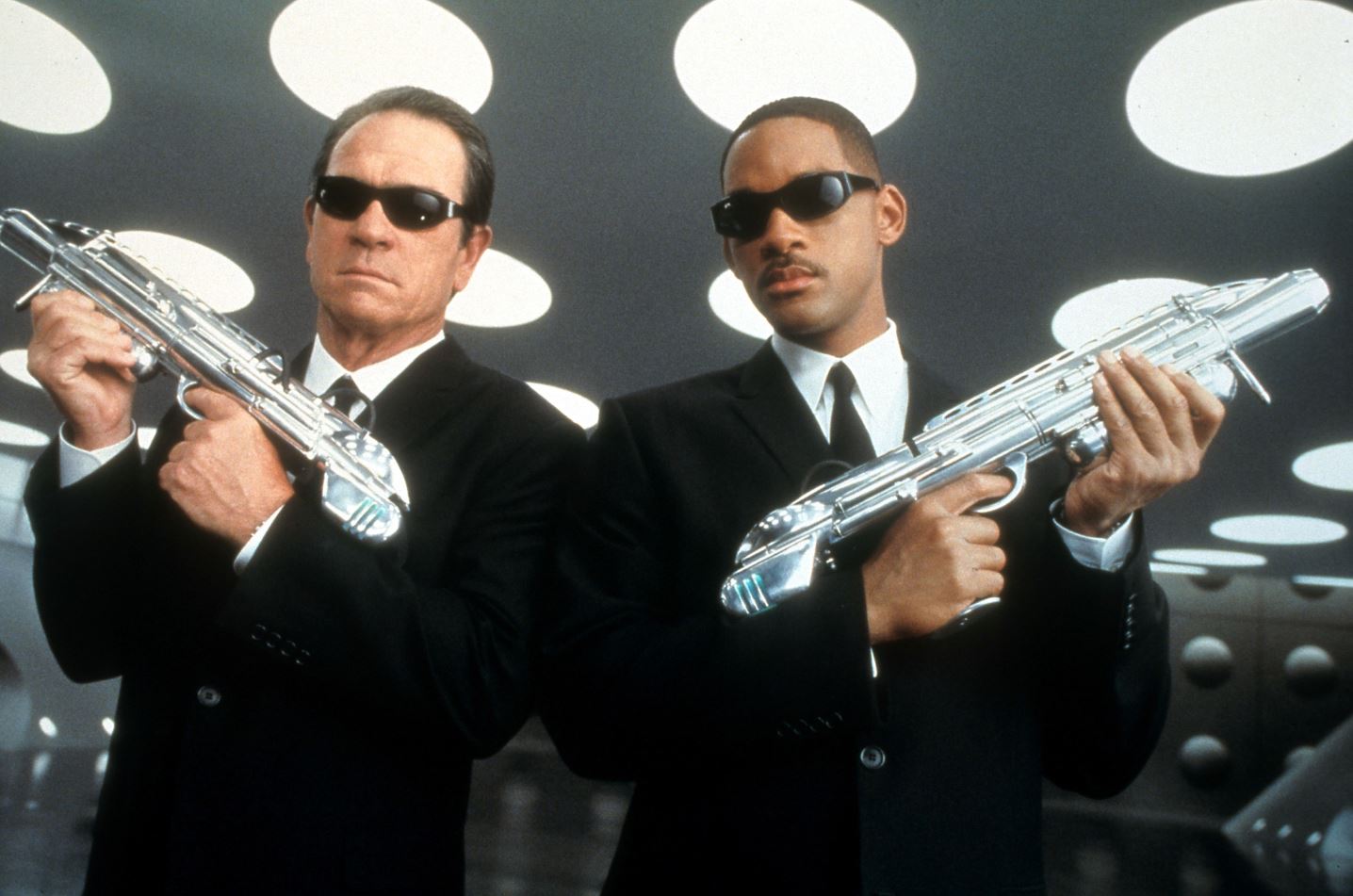
In 2019, the franchise was further expanded with “Men in Black: International.” This film starred Chris Hemsworth and Tessa Thompson, introducing new agents and a more global perspective to the series. While it attempted to reboot the franchise with fresh faces and settings, the reception was again mixed, indicating the challenges of maintaining the original charm and appeal of the series over multiple decades and iterations.
Overall, the “Men in Black” franchise has remained a significant part of popular culture, with each film contributing to the development of the series and its impact on the science fiction and comedy genres. The legacy of the original continues to influence how sequels and reboots are perceived and produced, reflecting both the challenges and opportunities of building on a beloved cinematic universe.
| Aspect | Details | Achievements/Nominations |
|---|---|---|
| Awards for “Men in Black II” | Nominated for technical achievements. | Nominated for Best Science Fiction Film at Saturn Awards; Best Visual Effects at Visual Effects Society Awards |
| Sequel “Men in Black 3” | Released in 2012, introduced time-travel, deeper character exploration. | Featured return of Tommy Lee Jones and Will Smith; added Josh Brolin as young Agent K |
| Expansion with “Men in Black: International” | 2019 release, introduced new agents and global perspective. | Starred Chris Hemsworth and Tessa Thompson; mixed reviews similar to earlier sequels |
| Franchise Impact | Significant cultural influence, impacts on sci-fi and comedy genres. | Continues to influence cinematic universe development |
“Men in Black II,” released in 2002, continued the narrative of the secretive and humorous dealings of Agents J and K with extraterrestrial life on Earth. As a sequel to the highly successful “Men in Black,” the film faced immense expectations from both fans and critics. While it did not surpass the original in terms of critical acclaim, it successfully expanded the universe established by its predecessor and solidified the franchise’s place in the sci-fi and action-comedy genres.
The impact of “Men in Black II” on the series is multifaceted. Financially, the film was a success, grossing over $441 million worldwide and ensuring the continuation of the franchise with subsequent entries. This commercial success demonstrated the strong audience interest and market viability of the “Men in Black” series, confirming its status as a staple of popular culture and a lucrative franchise for Sony Pictures.
Critically, the reception was mixed, with the film receiving praise for its visual effects, high-energy sequences, and the chemistry between its leading actors, Tommy Lee Jones and Will Smith. However, it was also criticized for a perceived lack of originality and depth in its plot. These critiques highlighted the challenges faced by many sequels in balancing the expectations for continuity with the desire for innovation.
Despite these criticisms, “Men in Black II” contributed significantly to the development of the characters and the overall lore of the series. It introduced new characters and expanded the roles of existing ones, enriching the universe and setting the stage for future stories. The film’s exploration of themes such as memory, identity, and duty deepened the narrative complexity of the series, offering a more introspective look at its protagonists.
In the broader context of the sci-fi and action-comedy genres, “Men in Black II” stands as a notable example of how franchises can evolve and adapt over time. The film blended the comedic elements with science fiction seamlessly, using humor to lighten the complex narratives typical of sci-fi while utilizing the futuristic and alien components to enhance the comedic impact. This blend has been influential, inspiring similar approaches in other genre hybrids that seek to entertain while also engaging with speculative themes.
The legacy of “Men in Black II” is also evident in its influence on subsequent sequels and related media. The film’s style, tone, and approach have been reflected in later entries, including “Men in Black 3” and “Men in Black: International.” Each new film attempts to capture the magic of the original while introducing new elements to keep the series fresh and relevant. This ongoing evolution speaks to the enduring appeal of the “Men in Black” universe and its ability to adapt to changing audience tastes and cultural contexts.
Ultimately, “Men in Black II” is a testament to the enduring popularity of the “Men in Black” series. It underscored the franchise’s capacity for creativity and entertainment, cementing its status in the cinematic landscape. While it may not have reached the heights of its predecessor, the film ensured the continuation of a beloved series and contributed to the shaping of the sci-fi and action-comedy genres. As part of a larger narrative, “Men in Black II” plays a crucial role in the ongoing saga of the Men in Black, serving both as a bridge to future adventures and a reminder of the unique charm that the series brings to its fans and the genre.
